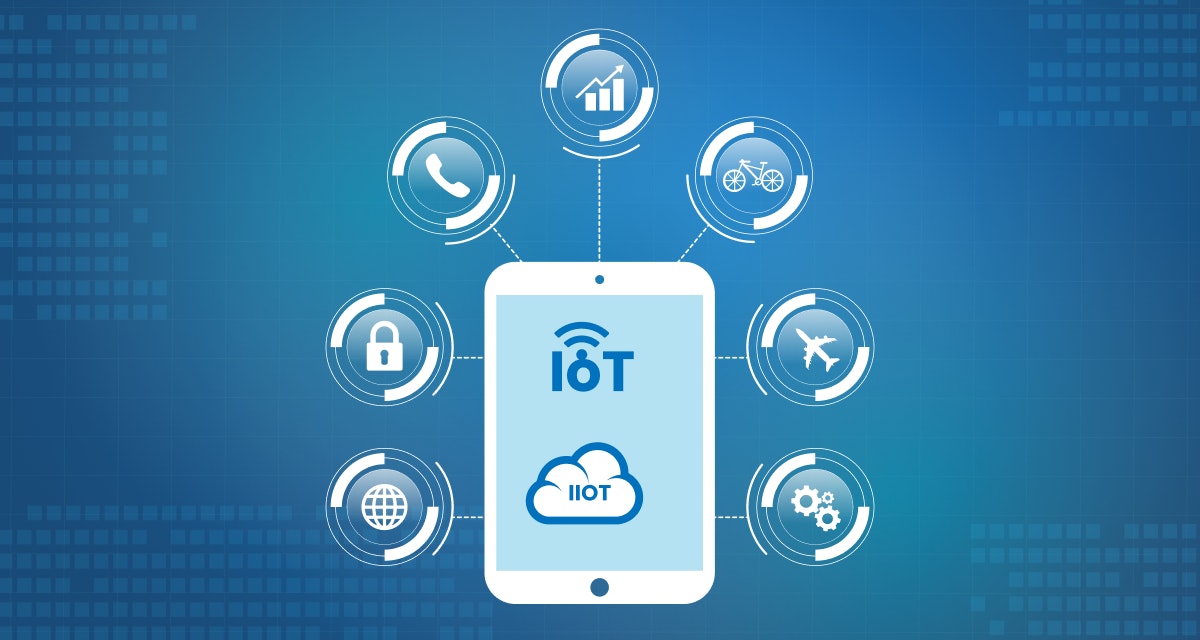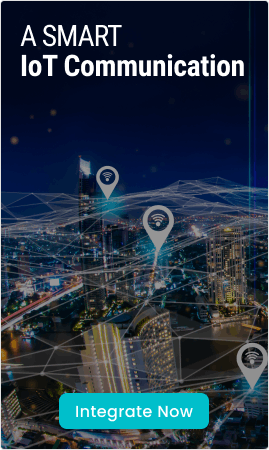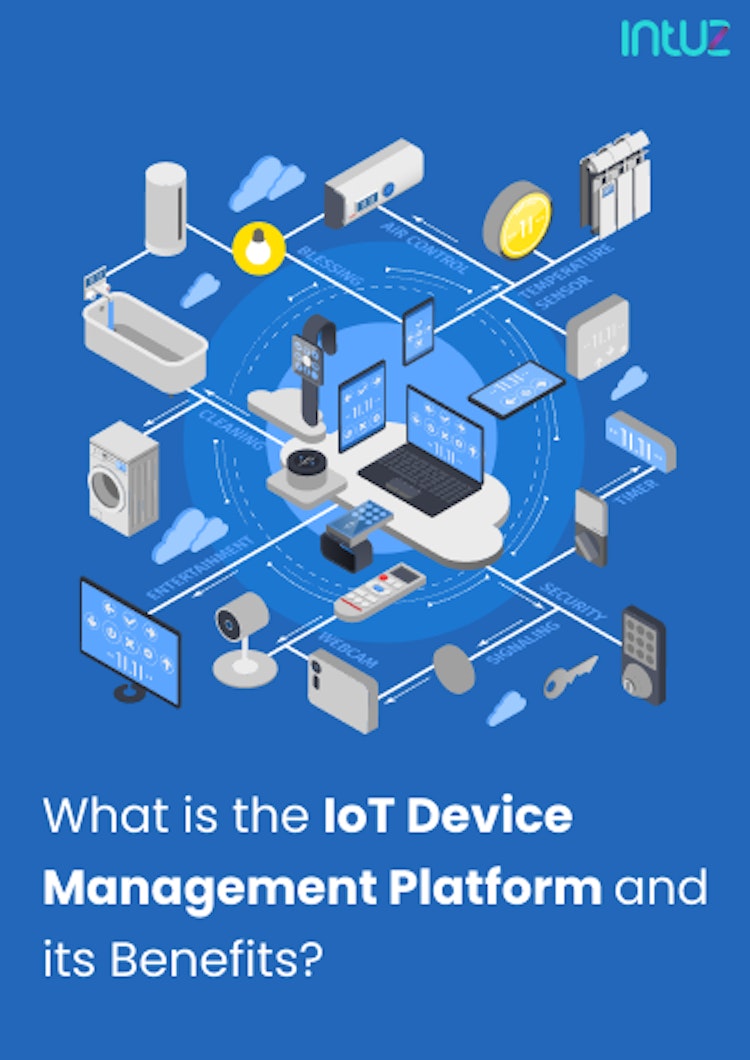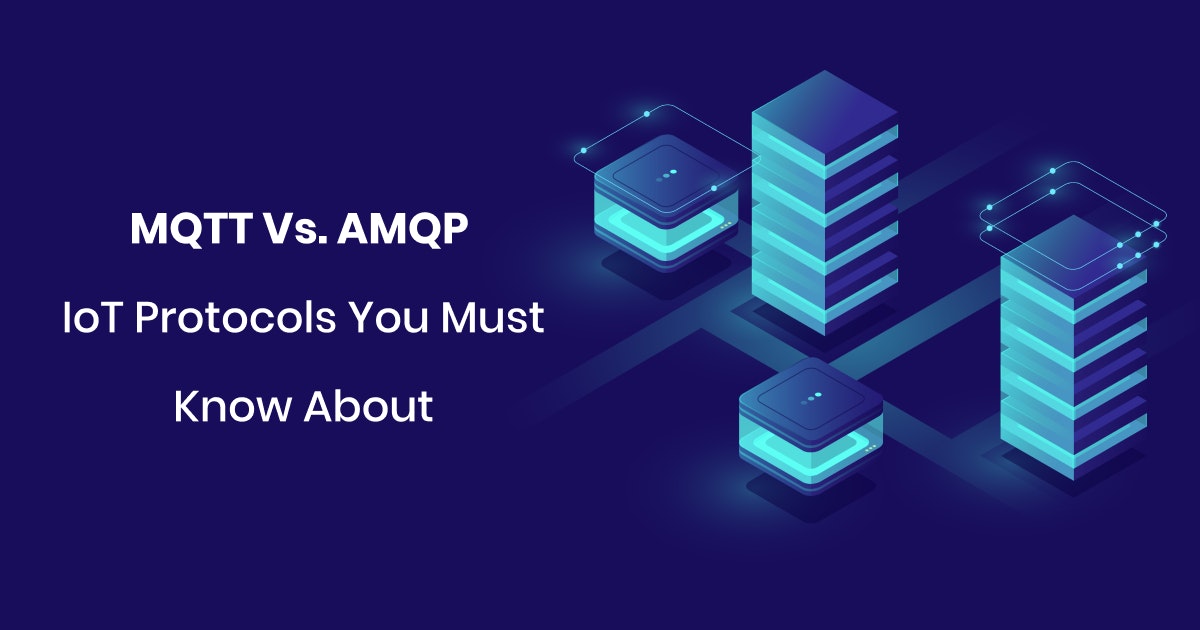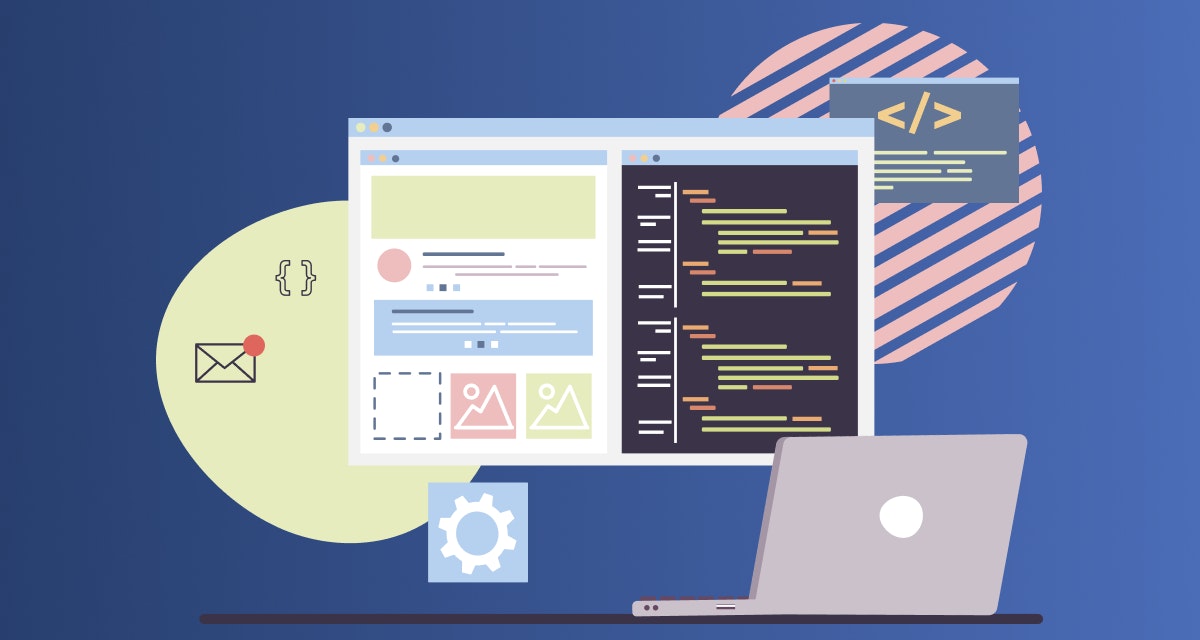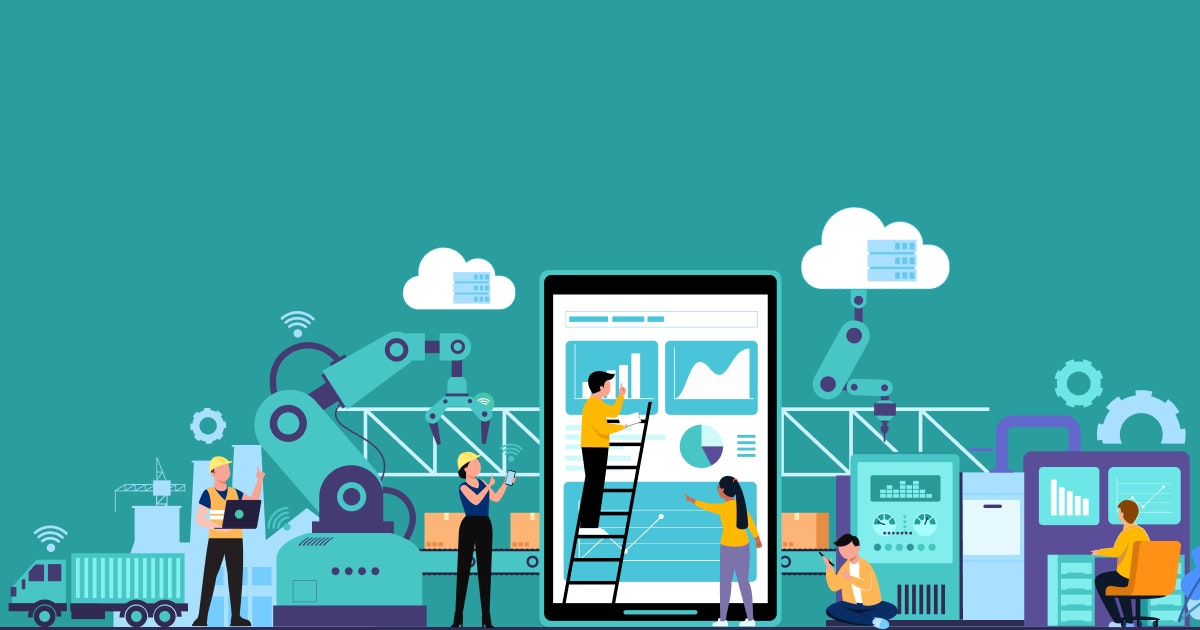Similarly, Industrial Internet of Things is a subgroup of IoT but with a focus on Machine-2-Machine [M2M] communication, Machine Learning, and Big Data .
IIoT comprises industrial applications such as power plants, manufacturing units, medical devices, software-defined production processes and utility equipment management.
These applications come with their computing ability and thus, can collect, monitor, exchange and analyze data at an industrial level. Business decisions can be made promptly and accurately, and the Industrial Internet of Things helps companies tweak their processes for greater efficiency.
Spotlight on the importance of IoT
Do you know that by 2022, mobile networks would support more than four billion IoT connections?
Or, as of today, there are already 127 devices connected to the internet every second?
Quite interestingly, the technology is predicted to fetch $1.6 trillion in market revenues by 2025.
Such is the fascination with IoT and for five good reasons:
- IoT platforms are designed for collecting and processing large volumes of data in such a way that it does not negatively impact or put pressure on the system performance.
- Since IoT deals with data on a large scale, it drives for Big Data analytics and IoT app development projects. No wonder companies are expected to invest $15 trillion in IoT by 2025. The demand for IoT is undoubtedly exponential.
- IoT is known for reducing major business expenses, including the cost of operating an office—saving maintenance overheads and alleviating downtime.
- With IoT devices, global communication has become swift and easy. It is possible to exchange information and collaborate efficiently, irrespective of where the other person is located.
- Regardless of the industry niche, companies can use IoT devices to tailor their service offerings and meet customer interests, deliver an enhanced customer service and improve their business value.
Sectors where IoT is growing
In the last few years, IoT has penetrated many other sectors and opened a pandora box of business growth and investment opportunities, including:
- Advertising
- Hospitality
- Retail
- Manufacturing
- Financial services
- Smart buildings
- Farming
Getting ready for Industry 4.0
We are in the midst of digital transformation on an enormous scale. This is because of the way we create and deliver products—moving towards flexible factory systems and industrial automation. This transition is called “Industry 4.0.”
Industry 3.0 introduced us to computers, which was considered disruptive at the time. In the next phase of the industrial revolution, factories and warehouses have to leverage the Industrial Internet of Things and digitalization to become more efficient and agile.
Since many industries have automated their operational processes, secure wireless connectivity enhances factory automation because of the support of smart machines that access more data, and in turn, improve productivity and performance.
For instance, in the manufacturing sector, smart machines enable the flexible production of goods by rapidly changing over production lines to shorten lead times. It is this kind of technology that makes the industrial revolution possible on a much larger scale.
The best part is these “ smart machines” are none other than the Industrial Internet of Things. The following section discusses IIoT in greater detail. Let us begin:
Components in IIoT
The IIoT goes beyond the usual interconnectivity of physical devices and consumer gadgets associated with IoT. What makes the Industrial Internet of Things distinct is the amalgamation of Information Technology [IT] and Operation Technology [OT].
OT represents the extensive network of industrial control systems [ICS] and operational processes, such as Supervisory Control and Data Acquisition [SCADA] systems, Programmable Logic Controllers [PLCs], Distributed Control Systems [DCS], and Human Machine Interfaces [HMIs].
Typical Industrial IoT solutions
The use of smart sensors and actuators for remote access and control in manufacturing, agriculture, healthcare and utility sectors helps monitor and control physical infrastructures. That’s why the demand for Industrial IoT development services is on the rise.M
- Web-based platforms for managing and connecting all the smart machines and collaborating with other users from anywhere
- Connectivity hardware - a combined industrial VPN router with specific models for 4G/cellular, Ethernet, and WiFi
- Remote access for remotely connecting to all your industrial devices such as HMI and PLC over a secure VPN connection on any smartphone or PC
- PLC data logging for pulling the data directly from the industrial equipment and storing it securely in the database
- Data visualization to visualize the data in historical or real-time dashboards for data analyses
- Alarms to monitor and manage real-time data at all times.
Not only that, real-time data gleaned from sensors and actuators help these physical infrastructures to come up with insights and specific actions that benefit companies with better and more efficient decision making.
Industrial Internet of Things and their potential
The key business opportunities, thanks to IIoT, is found in four major areas:
1. Vastly improved operational efficiency
From improved uptime to efficient asset utilization through remote management and predictive maintenance, the Industrial Internet of Things monitors all machinery in real-time, which means small issues can be detected early on and fixed before they cause a massive equipment failure.
This not only creates a safe environment for workers in factories and manufacturing units but also protects the environment, primarily if you work in a field prone to toxic gas leaks.
2. Emergence of an outcome economy
Software-driven services and hardware innovations fuel the Industrial Internet of Things. Imagine how much time would you spend tracking down equipment, inspecting the parts that are giving trouble, and developing reports to determine what maintenance to perform.
An IIoT solution tracks any piece of machinery and diagnoses the problem much more quickly. Industrial Internet of Things, thus, gives increased visibility into products and enables businesses to provide services based on the outcome they deliver, rather than its face value.
3. New connected ecosystems
No matter the time of day, you can get machine analysis in real-time because of the interconnectivity between equipment. This sort of arrangement blurs traditional industry boundaries, where recording data manually was previously the norm. This ensures that everything in the factory or manufacturing unit is working fine and your business is thriving.
4. Better collaboration between humans and machines
IIoT bridges the human/machine gap with the influx of Artificial Intelligence-powered robotics and autonomous systems that replace many manual tasks in the factory. Please note that this does not mean automation is replacing jobs.
Let us understand this with an example. An assembly worker automates his daily paper-work documentation activities, and lets machines do all the heavy-lifting and repetitive tasks.
This leaves more space for him to pick up variable and complex tasks such as ensuring quality control of a manufactured product or issuing a final stamp-of-approval on specific goods.
Due to IIoT, he experiences unprecedented levels of productivity and more engaging work experiences.
Barriers to adoption of Industrial Internet of Things
Overcoming these four challenges would require critical stakeholders to take appropriate investment and collaborative actions:
1. A very high risk of data leakage
With the advent of the industrial internet, the physical and virtual worlds combine at a large scale. Deploying IIoT technology is not free from security and data privacy hurdles for businesses and governments.
Cyberattacks, data breaches are driven by increased data sharing and device connectivity. For example, hackers could obtain sensitive data during transmission from one device to another, take control over the device or even participate in industrial espionage.
New security frameworks implemented in the entire cyber-physical stack—starting from application security and device-level authentication to system-wide resilience and incidence response models—are the need of the hour in IIoT.
2. Lack of interoperability amongst existing systems
The operational technology systems previously worked in silos. However, a fully-functional digital ecosystem requires seamless data sharing between machines and other physical systems from various other manufacturers and operating technology vendors. This might not be possible with earlier versions.
The drive towards interoperability is complicated by a long lifespan of industrial equipment, which would further require costly replacements to work with later technologies.
Transiting to IIoT can be extremely difficult when older, legacy systems are not welcoming of integration attempts. However, this problem can be fixed with proper IoT development services.
3. Uncertain return on investments
The uncertainty around ROI is one of the most significant barriers that stop businesses from experimenting with the Industrial Internet of Things.
According to a Frost & Sullivan study, nearly 60% of all manufacturing companies are worried about the costs associated with IoT app development and IoT deployment.
Software licensing, long-term implementation, and essential up-gradation are some of the basic things that need to be taken care of from time-to-time.
It is also necessary to consider the amount of time and money that will go into training maintenance technicians to maximize the investment in IoT development services.
4. Lack of standardization
Almost all manufacturing companies use a hybrid of proprietary systems along with various hardware and software solutions.
This lack of standardization is a barrier to successful adoption of the Internet of Things, which often leads to increased costs to the company for purchasing and setting up software solutions and systems that will work harmoniously together.
The same has also led to a booming requirement for IoT app development solutions in the industrial sector as more and more manufacturing companies need to alleviate the problem of standardization.
5. Shortage of digital talent
Since IIoT is a reasonably new technology, there is a shortage of professionals who understand the rapidly changing landscape of Industry 4.0 and can offer impeccable IoT development. Plus, they also need to be adept at helping companies deploy IoT efficiently.
Explore Intuz's IIOT Development Services and Revolutionize Your Industry!
Explore nowAdopting of Industrial Internet of Things: what it takes
Bain predicts that IIoT will overcome adoption barriers, discussed above, and grow into a $200 billion market by 2021. The integration challenges that many manufacturing companies are facing today are a strong indicator of greater IIoT adoption.
Therefore, to achieve scale, manufacturers and operational technology vendors will need to mobilize quickly to ensure they gain necessary capabilities and position themselves for long-term success. Here is how they can do that:
1. Concentrate on select use cases
Focus on exceptional use cases to tackle barriers of adoption such as data security, technology integration, ROI, and so on. Develop packaged IoT development accordingly that you can roll out to manufacturing companies for faster deployment.
2. Address capability gaps through partnerships
Manufacturing companies must work closely with CSPs, enterprise IT vendors, analytics vendors and IoT app building companies based on what they are pursuing. At the same time, avoid broad and vague alliances with too many players in the market. If you want the IIoT deployment to work for you, be more selective when choosing partnerships.`
3. Commit to long investment periods
As discussed previously, IIoT requires investment. But more importantly, it requires manufacturing companies to be realistic when it comes to funding, IoT app creation timeline, staffing changes and so on to deliver excellent results.
4. Scan broadly for new talent
There is a shortage of professionals who excel in IoT development solution. However, that does not mean such individuals do not exist! Identify, hire and retain the entrepreneurial talent who can thrive in the existing technological landscape.
5. Be ready to take risks
The reason many companies struggle is because they fear the nascent enterprise would not meet their P&L requirements or their existing product or service may get hampered. It is necessary to redesign the operating model around IoT initiatives that allow tapping the potential of such opportunities without breaking the bottom line.
Industrial Internet of Things use cases
1. Integrated sensors
When Airbus launched a digital manufacturing initiative called “Factory of the Future,” little did we know that it would become a remarkable way for streamlining operations and bolstering production capacity cost-effectively.
With integrated sensors in machines and tools and workers in wearable technology (e.g. smart glasses), it becomes easy to reduce errors and ensure workplace safety. In one procedure, i.e., cabin-seat marking, the wearables enabled 500% higher productivity levels.
Boeing has followed Airbus’ footsteps and deployed Industrial IoT development services to drive efficiency through supply chains and factories.
2. Robotics in warehouses
Imagine having robots in big warehouses that locate shelves of products and bring them to workers rather than the latter going to the frames themselves. Well, that is because of the advent of IIoT app development, and it happens in Amazon’s warehouses! The online retail giant was able to cut down its operating costs by 20% due to these smart robots.
3. Track-and-trace solutions
Adding to #2, adding sensors to tools, instead of products, has also led to an increase in productivity and efficiency in warehouses. Bosch ran an initiative to reduce the time that their workers spent on hunting down tools to work. With sensors, the tracking became more precise, and the technology was also eventually used to guide assembly operations.
4. AR apps
Imagine if there was an app that could give machine operations an eagle’s view of everything—from fuel levels to when air filters needed replacing. Today, IoT app development is possible, thanks to the merger between IoT and AR.
IIoT platforms you should know about
If you have read this far, you will agree that the Industrial Internet of Things platforms is an unmissable set of integrated software capabilities.
They improve asset management decision making and operational visibility for infrastructure, plant depots and equipment within asset-intensive companies.
Within a few years, the supply for Industrial IoT development services will also increase given the speed in which we are evolving. Adding to that, here are a few popular IIoT platforms you must know about:
- IBM Watson IoT by IBM
- Braincube
- Murano IoT Platform by Exosite
- Azure IoT by Microsoft
- Litmus Edge
- AWS IoT by Amazon Web Services
- Oracle IoT Cloud by Oracle
IoT vs IIoT: A comparative analysis
Will IoT replace SCADA and PLC systems?
In simple words, yes!
SCADA refers to a system of hardware and software solutions which enables industries to control processes locally or remotely and gather, monitor and analyze data in real-time. It allows smart devices to interact with human-machine interface software and logs events in a file.
PLC, on the other hand, receives information from connected sensors after which it processes the data and triggers outputs based on predetermined parameters. It can also start and stop processes and in alarms in case a piece of equipment malfunctions.
Cyberattacks were not a thing when SCADA and PLC began, and hence, minimal security features were added to both systems over a while. Moreover, they are not as accurate as modern-day computer systems.
IoT brings with it modern 32- and 64-bit computing to the machine-level interface. The precision of measurement, ease of deployment and the speed of execution—all drive IoT as replacements for SCADA and PLC.
Regarding the data security issue, communication standards in IoT are more standard. The devices authenticate and encrypt data and thus offer a stronger shield against cyberattacks.
Summing it up
There is no doubt that the future of IoT and Industrial Internet of Things is bright across industries. Sure, there are significant barriers to adoption. However, that does not mean IoT is not worth the risk. In order to keep up with the technology advancements, your company has to turn towards IoT. If you are looking for IoT development services or want a company that can take care of your IoT app development process, do not hesitate to contact us today.
